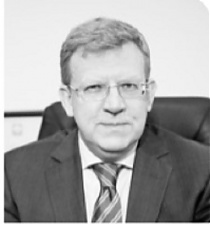Direct Speech, Economics, EU – Baltic States, Russia
International Internet Magazine. Baltic States news & analytics
Monday, 30.06.2025, 22:44
Russia’s economy after 2018: Long-term challenges, short-term solutions
 Print version
Print version |
|---|
Nine national goals are to be achieved by 2024: (1) ensure
sustainable natural population growth; (2) increase life expectancy to 78
years; (3) ensure sustainable growth of real wages and pensions above
inflation; (4) cut poverty in half; (5) improve housing conditions for at least
5 million households annually; (6) increase the share of innovating
organizations to 50%; (7) speed up the digitalization of the economy and the
social sphere; (8) become one of five world’s largest economies with growth
rates above the global average and inflation below 4%; (9) support
high-productivity export-oriented businesses in the key sectors of the economy,
doubling non-raw-material and nonenergy exports.
The Government will execute the Order by implementing 12
national projects, as well as the Integrated Infrastructure Modernization and
Expansion Plan – essentially, the thirteenth project. However, there is a lack
of clarity on how they will help to achieve the goals. It will be particularly
difficult to reach the intended growth rates. The growth potential remains at
1.5-2%. The forecast underpinning the current three-year budget assumes moderate
growth, with expected rate at 1.6-1.8% GDP in 2018. In 2019, the official
forecast assumes a decrease to 1.3%. Growth is expected to increase to 2% in
2020 and 3.1% in 2021.
However, there are a number of risks that may lead to slower
growth: inflation in 2019 may be above the planned 4.3% and the VAT will be
raised from 18 to 20%. In 2018, real incomes, decreasing for four years in a
row (by a total of 11%), may see zero or even negative growth. External factors
are also at play, with further sanctions against Russia and a deteriorating
global environment. Experts assess that sanctions ‘subtract’ around 0,5% of
growth annually.
As a result, real growth in 2019 may be at 1% or less, which
is below that forecasted by the Government and the Central Bank. 3.1% growth is
achievable only through a very active economic policy and institutional and
structural change.
Some structural changes are visible in two domains – the
reduction of non-oil and gas budget deficit and the launched pension reform.
The Government has presented an ambitious plan to reduce
nonoil budget deficit. Diversifying away from oil is a key challenge for the
Russian budget system. During peak oil in 2012, non-oil & gas budget
deficit stood at 9.7% of GDP, it will slide to 7.3% in 2017 and is expected to
reach 6% by late 2025.
Another major change is the pension reform. After the
transition period in 2028, the retirement age will hike from 60 to 65 for men
and from 55 to 60 for women. But the budget will actually start to save money
only after 2028-2030 and these funds will remain in the Pension Fund. So the
budget will basically not save any money with the increase of the retirement
age. On the contrary, raising retirement benefits at first will require
additional 7.5bn USD at current rates annually.
The federal budget would ideally reflect the new growth
model as well. Over the next three years, spending will increase from 18 to 20
trillion rubles (270 to 202bn USD at current rates), but with a decrease from
17% to 16% as share of GDP. Meanwhile, the budget structure for 2019-2021 will
remain the same. With an overall decrease in expenditure, there are slight cuts
in national defense (0.3 p.p.), national security and law enforcement (0.2
p.p.). Productive expenditure, like education, healthcare and infrastructure,
will not increase as percentage of GDP. This means that the budget is not
responding to the challenges of the technological revolution and a need for
emphasis on human capital.
Another systemic task highlighted in the presidential
address to Parliament is the downsizing of the public sector. This isn’t the
case, however, with the current draft budget expecting to gain less than 400mln
USD from privatization in three years. On the contrary, SOEs continue to
acquire private assets.
The President has not only assigned ambitious goals, but
also formulated a ‘breakthrough’ policy involving substantial changes beyond
budgeting. Institutional reforms are needed, including improving of public
administration; lowering the administrative burden on businesses; enhancing
regulation; upgrading of the judicial system. In the coming three years, the
Russian economy will continue to face the need for structural change. The
national goals will not be easily achieved. Taking into account the external
environment, growth rates may be much lower than desired, thus questioning a
breakthrough and a change of the economic.








 «The Baltic Course» Is Sold and Stays in Business!
«The Baltic Course» Is Sold and Stays in Business!

